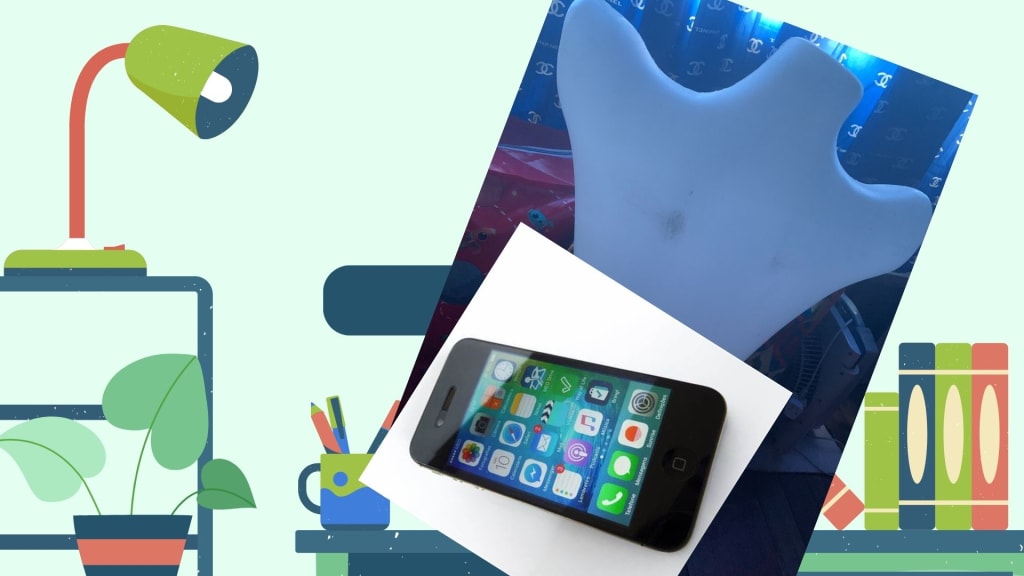Is the Configuration of Our Bones Undergoing Alterations Due to Cell Phones?
In our minds too?

Recently, a new topic has been arising in the media: cellphone mutagenesis. This comes from a recent study that suggests that, by using phones and tablets, we can cause serious and long-lasting changes to our bodies. The study was conducted by David Shahar and Mark Sanders, who specialized in biomechanics at Australia's University of the Sunshine Coast.
According to this research, skeleton adaptation can be used to work out a person's life history and physical activity. It's been known for some time that skeletons adapt to how we live our lives.
Every person's skeleton tells a story, for example, some unusually large skeletons were found on the Pacific island of Tinian in 1924. In the vicinity of these skeletons, stone structures could explain the substantial nature of the islands' bones. Some experts believe that modern technology is shaping young people's skeletons. To do this, an EOP or external occipital protuberance is caused. It's all connected to a ligament called the nuchal ligament. Some people have been more colorful and described it as foam ball or a devil-like horn - in reality, it's just a growth located on the back of someone's skull. The EOP creates an effect much like an anchor at the top of the nuchal ligament.
The research conducted by David Shahar and Mark Sayers investigated changes in the skeleton, specifically focusing on the emergence of what they called "horns" or "spikes" on the back of the skull, scientifically referred to as the external occipital protuberance (EOP). They suggested that prolonged usage of smartphones and tablets might be linked to poor posture, causing extra pressure on the EOP, potentially leading to its elongation, particularly among younger individuals. Their study highlighted a higher occurrence of this condition in men compared to women.
However, this study has been met with skepticism and criticism. Some experts question the study's methodology and the lack of substantial evidence to fully support the claims. They argue that elongated skull bones, particularly in males, are not a novel occurrence.
In essence, while Shahar and Sayers' research brought attention to the potential impact of modern technology on our bodies, it's important to note that the findings have not been widely accepted due to the lack of concrete evidence. The sensationalized idea of people developing "horns" from smartphone use requires more thorough and conclusive research to establish a direct connection between device usage and skeletal changes. Discussions on the broader impact of technology on our health and lifestyle are crucial, but they should be rooted in more comprehensive and rigorous scientific evidence.
Do smart devices have an impact on your physical and mental well-being? When you're looking at your phone, you might sense the strain on your spine from holding it. Having the equivalent weight of an eight-year-old child on your neck can be quite significant. The average person spends approximately 4.7 hours on their phones, and when you add that to the time spent on computers, it has contributed to the increasing prevalence of myopia in North America. In the 1970s, only a quarter of the population had myopia, but today, it affects nearly half of the population. In certain parts of Asia, the figure is as high as 80 to 90 percent.
People with myopia find it challenging to put their phones away, and games like Candy Crush, for instance, exemplify this. Each time you play, you accomplish small goals, triggering your brain to release dopamine as a reward. This constant cycle of reward keeps you engaged with new content as well.
It provides a small dose of dopamine, contributing to the formation of what's known as a "compulsion loop." Interestingly, this loop is the same one responsible for behaviors associated with nicotine or even cocaine. The human brain has an innate drive for creativity, which is why these applications exist.
Our smartphones are engineered to continually offer us new features and products, making it challenging for us to detach from them. Consequently, a whopping 93% of individuals aged 18 to 29 use their phones as a means to ward off boredom, in contrast to activities such as reading books or engaging with those around them. This phenomenon has given rise to a novel term, "nomophobia," referring to the fear or anxiety stemming from being without one's smartphone.
Moreover, our brain activity patterns undergo transformations. Alpha rhythms are typically linked to a relaxed state, akin to when your mind wanders, while gamma waves are associated with focused attention. Experiments reveal that when the phone is active, for instance, during an incoming call, these waves intensify significantly, signifying that the processes underlying these "waves" can genuinely alter brain functions.
Furthermore, smartphones can interfere with or disrupt our sleep patterns. The blue light emitted from screens appears to affect our circadian rhythm, reducing the depth of sleep during the night. This, in turn, is connected to the increased risk of conditions like diabetes, cancer, and obesity. Studies have demonstrated that individuals who use their phones at night often struggle to fall asleep and produce limited melatonin, the hormone responsible for regulating sleep and wakefulness. It's recommended by experts, such as those at Harford Medical School, that the last 2-3 hours before sleep be technology-free, promoting activities like reading a book.
Certainly, smartphones have revolutionized the way we access information and stay connected. In regions with minority and low-income populations, 7% of Americans rely heavily on smartphones to access the internet. In 2014, a study highlighted that the majority of smartphone owners use their devices for tasks such as banking, seeking medical information, and job hunting. While smartphones, as a whole, are not inherently negative, they undeniably constitute a pivotal and positive force in our evolving world.
About the Creator
Enjoyed the story? Support the Creator.
Subscribe for free to receive all their stories in your feed. You could also pledge your support or give them a one-off tip, letting them know you appreciate their work.





Comments
There are no comments for this story
Be the first to respond and start the conversation.